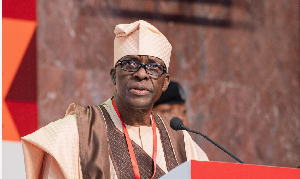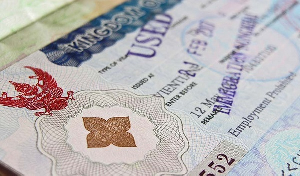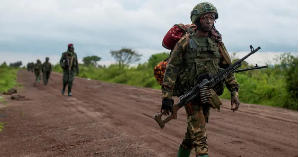by Caesar Abagali, GNA
Available statistics in the country indicate that the country as a whole is poverty afflicted, but with worse incidence in the Upper East, Upper West and Northern regions.
The national average of poverty is estimated as 39 percent while in the Northern Region it is 69 percent, Upper East Region 88 percent and the Upper West Region 84 percent. The next poorest region is the Central Region at 48 percent.
The new government policy and strategy, that is the Ghana Poverty Reduction Strategy (GPRS) aims at reducing poverty in the three northern regions as follows: Upper East, from 88 percent to 75 per cent, Upper West, from 84 percent to 70 percent and Northern Region from 69 percent to 60 percent. These targets still leave an unbearable and criminally intolerable level of poverty in the regions.
It is an established fact that every nine households out of 10 in the Upper East Region live below the poverty line. The situation there is not one of normal poverty but a critically precarious existence. Low life expectancy, low educational standards, high infant mortality rates and the high incidence of emigration especially of the youth to other parts of the country, further entrench a vicious cycle of poverty in the north.
This situation is not accidental. The history of an exclusive national development pattern, which concentrated on the south to the detriment of the north is directly responsible for the status, which was further exacerbated by indifference on the part of governments since independence.
The north was only valuable to the colonial authorities as a "warehouse of cheap labour". At the time of independence the entire north was known simply as the Northern Territories and the north served as an adjunct from which to tap cheap labour to the south.
Until very recently, most Ghanaians considered it a punishment to be posted to the north to work. Most people in the south including high public officers cannot tell which part of the north borders Burkina-Faso, or in which region Sandema or Chaana is situated. It is also common for people in southern Ghana, out of ignorance to assume that all people of the north are Moslems and speak Hausa, a language, which owes its origin to Northern Nigeria.
The lopsided development of the country has deprived the north of the opportunity of harnessing and exploiting its abundant human and material resources for the advancement of its people and the nation as a whole.
The north needs a national Marshall plan, similar to the one being sought under NEPAD. Government owes as an obligation to the people, balanced development of the entire country and equal enjoyment of the fruits of development without discrimination.
The northern regions have been discriminated against in the allocation of vital requirements for development. For instance the first secondary school in the north was established in 1951 when others in the south were already 100 years old. The government of the First Republic attempted to integrate the north by the policy of free education and citing there of some industries. These policies were abandoned by subsequent governments, and now school fees keep many children out of school, adding to the lopsided development.
Surprisingly, under the GPRS, smaller amounts have been allocated to the most deprived regions, which would further entrench poverty in those regions, particularly the north.
As a way forward, there must be a government policy to locate industries in the north as a matter of priority. The existing industries - the meat and the tomato factories at Bolgatanga in the Upper East Region - should be resurrected to give permanent employment to the youth.
There must be a national realistic framework provided for effective decentralisation of key institutions like agricultural programmes, Civil Service and education.
A national Agricultural Policy must be designed in which the northern regions could feature prominently to help develop their vast potentials.
This must take into account the unreliable rainfall patterns in the area, which has given rise to perennial drought, poverty and hunger. The development of small-scale irrigation dams is therefore, central to such an agricultural policy. It should take advantage of the widespread technical know-how in irrigation and the network of valleys and streams spread all over the north.
The policy should include a programme to rehabilitate and desilt all existing dams and dugouts in the area. The most fundamental and effective antidote to the factors militating against sustainable agriculture is to develop and sustain a small-scale water management policy for land irrigation in the north.
Each district should assist to acquire minimum irrigation and dam reconstruction equipment to assist in dam maintenance and construction. If implemented seriously this irrigation policy would reduce poverty and help environmental balance through tree planting. Income levels would also improve through farming throughout the year.
These are the very least that a grateful nation can do for the tenacious and hard-working people of the northern regions who have selflessly, and honestly laboured to develop this country over decades for cocoa farms and mines to sustain the country's main source of income. Balanced development for all Ghanaians is a constitutional requirement.





















